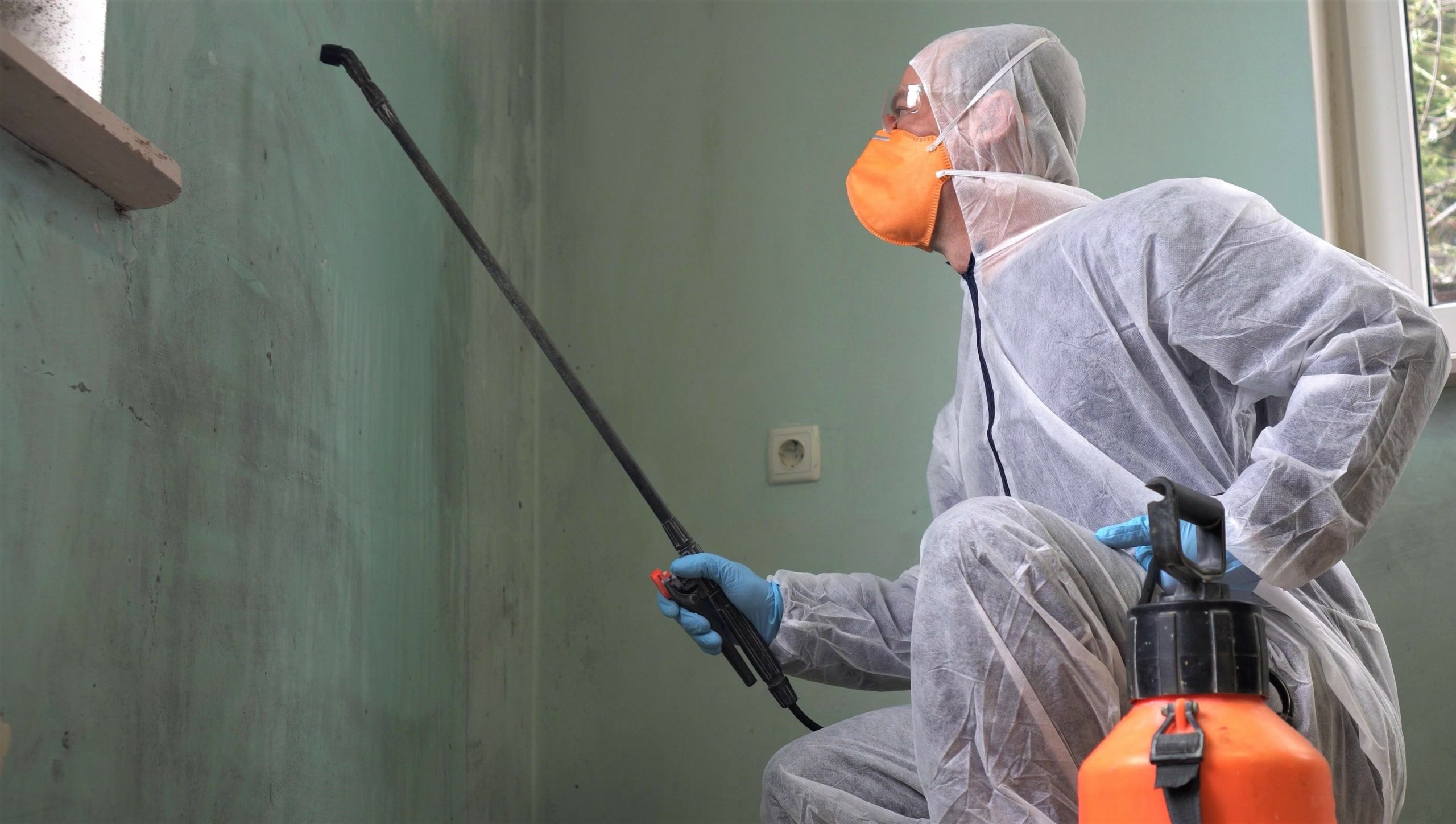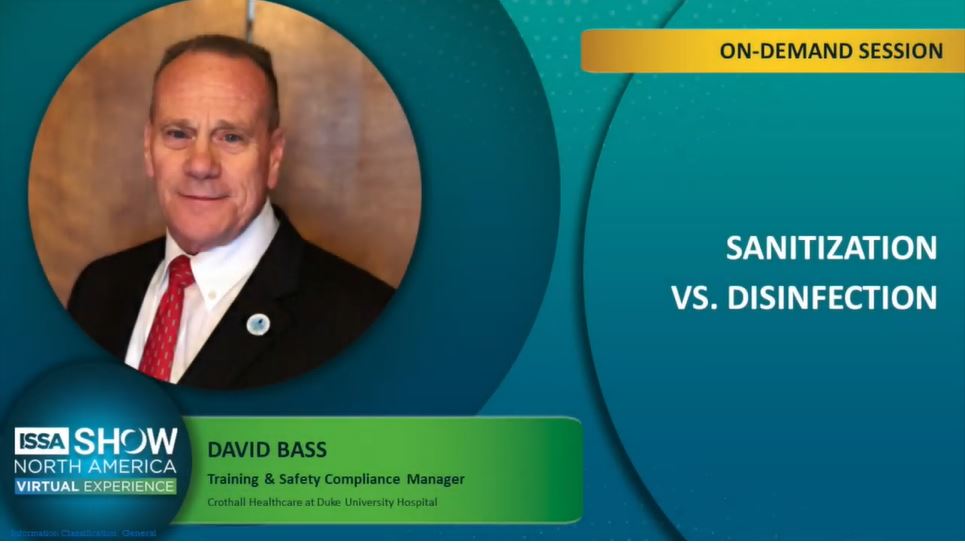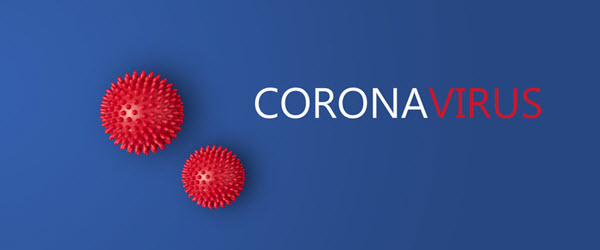The influence of these wipes and salves does not end with our hands, but instead spreads from them down our drains and out into society.
 A few weeks ago as I was walking out of a Harris Teeter grocery store in Raleigh, North Carolina, I saw a man face a moment of crisis. You could see it in the acrobatic contortions of his face. He had pulled a cart out of the area where carts congregate, only to find that its handle was sticky with an unidentifiable substance. He paused and looked at the handle, as if to imagine the nature of the offense. Gum? Meat juice? Chewed marshmallows? So many vulgar possibilities. Forlorn, he reached for an antibiotic wipe conveniently placed by the door. He scrubbed his hands VERY diligently and then pushed the cart back for someone else to rediscover [1].
A few weeks ago as I was walking out of a Harris Teeter grocery store in Raleigh, North Carolina, I saw a man face a moment of crisis. You could see it in the acrobatic contortions of his face. He had pulled a cart out of the area where carts congregate, only to find that its handle was sticky with an unidentifiable substance. He paused and looked at the handle, as if to imagine the nature of the offense. Gum? Meat juice? Chewed marshmallows? So many vulgar possibilities. Forlorn, he reached for an antibiotic wipe conveniently placed by the door. He scrubbed his hands VERY diligently and then pushed the cart back for someone else to rediscover [1].
 Scenarios like this one are playing out all over America. There is an epidemic of sticky, dirty and otherwise gross handles on shopping carts. But it isn’t just carts. Disgusting doorknobs have also been found, as have cryptically damp table-tops in restaurants and even, sad as it is, slimy back rests on the weight machines in gyms! Increasingly, the world seems to be rife with contamination. Fortunately, all of the main companies producing hygiene products have offered a solution–sanitary, antibacterial, antimicrobial, antibiotic, wipes, and soaps to kill anything that dares to creep into our wholesome lives. These salves will cure us of the demons that dare to grow near us.
Scenarios like this one are playing out all over America. There is an epidemic of sticky, dirty and otherwise gross handles on shopping carts. But it isn’t just carts. Disgusting doorknobs have also been found, as have cryptically damp table-tops in restaurants and even, sad as it is, slimy back rests on the weight machines in gyms! Increasingly, the world seems to be rife with contamination. Fortunately, all of the main companies producing hygiene products have offered a solution–sanitary, antibacterial, antimicrobial, antibiotic, wipes, and soaps to kill anything that dares to creep into our wholesome lives. These salves will cure us of the demons that dare to grow near us.
 The really intriguing news–a kind of breakthrough–is that the main compounds in antibiotic wipes, creams and soaps, triclosan and/or the chemically similar triclocarban, have also been sprinkled around our lives more generally. A recent study notes that triclosan is now used to “impregnate surfaces and has been added to chopping boards, refrigerators, plastic lunchboxes, mattresses as well as being used in industrial settings, such as food processing plants where walls, floors and exposed machinery have all been treated with triclosan in order to reduce microbial load.” You can now go home, wipe your world down and live a happier life, surrounded by an antibiotic force field. Be especially sure to wipe your children down. Children are just about the grimiest thing in the world.
The really intriguing news–a kind of breakthrough–is that the main compounds in antibiotic wipes, creams and soaps, triclosan and/or the chemically similar triclocarban, have also been sprinkled around our lives more generally. A recent study notes that triclosan is now used to “impregnate surfaces and has been added to chopping boards, refrigerators, plastic lunchboxes, mattresses as well as being used in industrial settings, such as food processing plants where walls, floors and exposed machinery have all been treated with triclosan in order to reduce microbial load.” You can now go home, wipe your world down and live a happier life, surrounded by an antibiotic force field. Be especially sure to wipe your children down. Children are just about the grimiest thing in the world.
Yet, although I hesitate to digress or cause trouble, the devil on my shoulder, that voice of so-called reason, is urging me to avail myself of more than the vague suspicion that everything around me is contaminated. Maybe, the devil says, we should glance, just for a second, at what scientists like to call–in their nasally ivory-tower voices–”the evidence.” I do not mean anything too fancy… Let’s just take a moment to look at a study here and there that might be relevant as we go about coating our lives–from underpants to kitchen pans–in antibiotic wonder.
For example, what if we just considered whether people who wipe down the world around them with antibiotic soap or wipes are less likely to be sick. Of course, they must be. The world is gross and they are, God bless them, clean, but let’s just check.
OK, we shouldn’t have checked. There are some problems. One is the actual evidence, or just as often, lack thereof. Case in point: along with her colleagues, Allison Aiello, a professor at the University of Michigan, recently surveyed all of the experimental or quasi-experimental studies published in English between 1980 and 2006 on the effectiveness of different hand washing strategies [2]. Aiello focused on studies that compared different strategies, for example the use of normal soap versus the use of antibiotic soap, in terms of their effect on the probability of developing gastrointestinal or respiratory illness. Our intuition is that antibiotic soaps and wipes should make everyone healthier. Aiello’s results were something else entirely.
Aiello’s first result was fine enough, but it set the stage for the trouble to come. She found “the use of nonantibacterial soap with hand hygiene education interventions is efficacious for preventing both gastrointestinal and respiratory illnesses.” In other words, if you wash your hands with soap (and are educated about washing your hands with soap) you are less likely to get sick. Score one for intuition and grandma’s admonitions. But then things went terribly wrong.
Aiello next considered the antibiotic soaps and wipes now used, in one form or another, by 75% of American households. Odds are that you use them. Go check your labels. Sadly, Aiello and colleagues found that antibiotic soaps and wipes with triclosan were no more likely than good old-fashioned soap to prevent gastrointestinal or respiratory illness. In Aiello’s words, “There was little evidence for an additional impact of new products, such as alcohol-based hand sanitizers or antibacterial soaps compared with nonantibacterial soaps, for reducing either gastrointestinal or respiratory infectious illness symptoms.”
 For example, in a study Aiello reviewed that was conducted in Pakistan, gastrointestinal illnesses were reduced by half when people washed their hands with soap and by a little less than half when they washed their hands with antibiotic soap [3]. What is worse, perhaps the most comprehensive study of the effectiveness of antibiotic and non-antibiotic soaps in the U.S., led by Elaine Larson at Columbia University (with Aiello as a coauthor), found that while for healthy hand washers there was no difference between the effects of the two, for chronically sick patients (those with asthma and diabetes, for example) antibiotic soaps were actually associated with increases in the frequencies of fevers, runny noses and coughs [4]. In other words, antibiotic soaps appeared to have made those patients sicker. Let me say that again: Most people who use antibiotic soap are no healthier than those who use normal soap. AND those individuals who are chronically sick and use antibiotic soap appear to get SICKER.
For example, in a study Aiello reviewed that was conducted in Pakistan, gastrointestinal illnesses were reduced by half when people washed their hands with soap and by a little less than half when they washed their hands with antibiotic soap [3]. What is worse, perhaps the most comprehensive study of the effectiveness of antibiotic and non-antibiotic soaps in the U.S., led by Elaine Larson at Columbia University (with Aiello as a coauthor), found that while for healthy hand washers there was no difference between the effects of the two, for chronically sick patients (those with asthma and diabetes, for example) antibiotic soaps were actually associated with increases in the frequencies of fevers, runny noses and coughs [4]. In other words, antibiotic soaps appeared to have made those patients sicker. Let me say that again: Most people who use antibiotic soap are no healthier than those who use normal soap. AND those individuals who are chronically sick and use antibiotic soap appear to get SICKER.
Here, then, is the evidence we need, evidence very clearly at odds with our intuition to scrub and scrub. Yet hardly anyone has followed up on Larson’s study and no one has reexamined what happens with chronically sick patients and antibiotic soaps. The truth is that few biologists are studying what antibiotic soaps do to us. Still, the evidence indicates that when confronted with a dirty grocery store cart handle, we should just wash with soap and water like our great grandmothers would have done (if they had had grocery carts). At the very least, antibiotic wipes do not appear to help us and, it may be that they are actually hurting us.
The devil on my shoulder suggests we need to take the radical step of actually thinking for a second about what happens when you wash your hands, or whatever other part. This is a step almost never taken in the study of illness. Our skin (just likeLady Gaga’s skin) is covered in bacteria species. More than a hundred species of bacteria (not to mention fungi and other kinds of organisms) can be found on a single hand of any given adult [5] or for that matter belly button, forehead or other part, at any given moment. It appears that those species include two main groups. There are the “native” species, our own bodily citizens that have evolved to live in peace on our skin and, in doing so, benefit us by acting as a kind of defensive layer. Then there are the tourists. It is these tourists that cause us harm, the tourists who bear chemical knives.
When you wash your hands, the goal is not to kill all the microbes. As Larson and a group of colleagues put it in a 2003 paper “Handwashing with a non-antimicrobial soap does little to modify the natural [citizen] flora. In fact, such an effect would be undesirable.” What is desirable is, instead, to kill the tourists who have just turned up but not yet established, or at least the dangerous among those newly arrived species. Kill the tourists is a reasonable hand washing motto (although the truth is we still know surprisingly little about the citizens; they are the neglected serfs of our bodies). Soap is thought to be effective at killing the tourists, not always, but at least often, although this hypothesis has never been directly tested.
 But what do antibiotic wipes and soaps do? Amazingly, no one really knows. In the vacuum of a laboratory they can kill both viruses and bacteria, but what about on the jungle of our bodies? It seems possible that they are able, in some cases, to kill both some of the tourists AND some of the citizens. Perhaps (which is to say, I am mostly guessing for the rest of this paragraph) when we are mostly healthy, this doesn’t matter; the bacteria regroup and recover or our body in other ways defends. But when we are already unwell, it may be that this is enough to make us more unwell by killing both natives and tourists and, in some cases, allowing the weediest tourists to recolonize first. Maybe, but this is just my scientific intuition which, let’s be honest, needs to be as carefully doubted and picked at as with our intuitions more generally.
But what do antibiotic wipes and soaps do? Amazingly, no one really knows. In the vacuum of a laboratory they can kill both viruses and bacteria, but what about on the jungle of our bodies? It seems possible that they are able, in some cases, to kill both some of the tourists AND some of the citizens. Perhaps (which is to say, I am mostly guessing for the rest of this paragraph) when we are mostly healthy, this doesn’t matter; the bacteria regroup and recover or our body in other ways defends. But when we are already unwell, it may be that this is enough to make us more unwell by killing both natives and tourists and, in some cases, allowing the weediest tourists to recolonize first. Maybe, but this is just my scientific intuition which, let’s be honest, needs to be as carefully doubted and picked at as with our intuitions more generally.
What we do know is that the influence of these wipes and salves does not end with our hands, but instead spreads from them down our drains and out into society. What happens when antibiotic soaps and suds go down drains? To find out, a group of scientists recently made artificial drains clogged with bacteria (oh, the difficulties of science) and then subjected them to low and high doses of triclosan (similar to what happens when your detergent goes down the drain). Even at high concentrations, triclosan appears to have no effect on the number of bacterial cells in our drains. BUT, it does affect which species are found there. Triclosan kills “weak” bacteria but favors the tolerant, among them species of bacteria that eat triclosan [6]. Yes, I said eat triclosan. Triclosan may also favor lineages of bacteria that are also resistant to the oral antibiotics used in hospitals and elsewhere [7], though how often and consistently is, as of yet, unclear. Nonetheless, the hint of the tougher future triclosan might be favoring is, perhaps, a bit troubling.
Nor are drains the end of the story. Triclosan continues its journey, the little chemical that could, on to sewage treatment plants and into water supplies. In many municipal water supplies triclosan can now be found in relatively high concentrations. Those high concentrations affect the microbes that are always present in water, but also appear to act as endocrine disrupters in fish. For example, fish exposed to triclosan have lower sperm counts than those that are not [8]. Even if you don’t care about the sex lives of fish, this might still worry you, given the great similarities, on evolutionary grounds, between the hormones of fish and humans [9].
But I apologize. All of this was a diversion from the original story of the man with the cart, the man wringing his hands. This story digressed from his story, just as the consequences of his choice appear to cascade away from him out into the world.
The man continued on into the store, pausing only briefly to look at me, as if maybe he knew me. Then I saw that he was looking at my son. I looked at my son too, which is when I saw his marshmallow covered hands. I mouthed sorry back to the man, having realized, of course, that it was my cart he had first taken. My son would have mouthed sorry too, if he talked yet, and if his mouth wasn’t so gummed up with marshmallows.
“Sorry…,” I was going to mouth again, but then he was gone and we needed to be going too, to get home and eat, after washing our hands, but just with good old fashioned soap. I’ll abandon the antimicrobial soap, detergent, and wipes. And I am pretty sure that I have never purchased the other antimicrobial products, whether the counter tops or underpants. This may seem sad, as though we have lost the war on the bad bacteria and viruses, those tourists with their counterfeit visas. If it does, I extend my apologies to you too. What is worse is that we seem to have lost it at a terrible time, what with all of the gross shopping carts and, more seriously, the reality that last year 2 million people died of respiratory infections. The good news, though, is that scientists have figured out a way to reduce the frequency that people get sick by as much as forty percent.
It turns out that although we know that washing our hands prevents a range of illnesses and are incredibly eager to buy products marketed to kill germs, we don’t actually take the simpler measure of washing hands in the first place. A study of nearly eight thousand individuals in five U.S. cities found almost half of the participants failed to wash their hands after going to the bathroom. In this light, no mystery salve is necessary, no miracle cure, special wipe, or magic. We need to wash our hands, because soap does the body good, at least in all the ways studied so far. It is not fancy. It is not expensive or heavily marketed and yet it works, as it long has, even though as of yet, no one can conclusively, unambiguously, tell you why.
———————————————————————————————————————
[1] Those who are ignorant of cart history are doomed to repeat it.
[2] Aiello AE, Coulborn RM, Perez V, Larson EL. 2008. Effect of hand hygiene on infectious disease risk in the community setting: a meta-analysis. Am J Public Health98:1372-1381.
[3] Luby SP, Agboatwalla M, Painter J, Altaf A, Billhimer WL, Hoekstra RM. Effect of intensive handwashing promotion on childhood diarrhea in high-risk communities in Pakistan: a randomized controlled trial. JAMA. 2004;291:2547–2554.
[4] Larson EL, Lin SX, Gomez-Pichardo C, Della-Latta P. Effect of antibacterial home cleaning and handwashing products on infectious disease symptoms: a randomized, double-blind trial. Ann Intern Med. 2004;140:321–329.
[5] Fierer, N. M. Hamady, C.L. Lauber, R. Knight. 2008. The influence of sex, handedness, and washing on the diversity of hand surface bacteria. Proc. Natl. Acad. Sci, USA. 105: 17994-17999.
[6] McBain, A. J.; Bartolo, R. G.; Catrenich, C. E.; Charbonneau, D.; Ledder, R. G.; Price, B. B.; Gilbert, P. Exposure of sink drain microcosms to triclosan: Population dynamics and antimicrobial susceptibility. Appl. Environ. Microbiol. 2003, 69, 5433−5442.
[7] Aiello AE, Larson EL. Antibacterial cleaning and hygiene products as an emerging risk factor for antibiotic resistance in the community. Lancet Infect Dis. 2003;3:501–506.
[8] Raut, S. A., and R. A. Angus 2010. Triclosan has endocrine-disrupting effects in male western mosquitofish, Gambusia affinis. Environ Toxicol Chem 29: 1287–1291.
[9] Rees Clayton, E.M., Todd, M., Dowd, J.B., Aiello, A.E.† (2010) The impact of bisphenol A and triclosan on immune parameters in the US population, NHANES 2003-2006. Environmental Health Perspectives
*
Image Credits: Bacteria cartoon, colorful shopping carts, Cart wipes, Triclosan ingredient, BioFresh mushrooms.
 About the Author: Rob Dunn is a science writer and biologist in the Department of Biology at North Carolina State University. His first book, Every Living Thing, told the stories of the sometimes obsessive, occasionally mad, and always determined, biologists who have sought to discover the limits of the living world. His new book,The Wild Life of Our Bodies, explores how changes in our interactions with other species, be they the bacteria on our skin, forehead mites or tigers, have affected our health and well being. Rob lives in Raleigh, North Carolina with his wife, two children, and lots of microbes.
About the Author: Rob Dunn is a science writer and biologist in the Department of Biology at North Carolina State University. His first book, Every Living Thing, told the stories of the sometimes obsessive, occasionally mad, and always determined, biologists who have sought to discover the limits of the living world. His new book,The Wild Life of Our Bodies, explores how changes in our interactions with other species, be they the bacteria on our skin, forehead mites or tigers, have affected our health and well being. Rob lives in Raleigh, North Carolina with his wife, two children, and lots of microbes.
Originally Published in Scientific American on July 5, 2011






